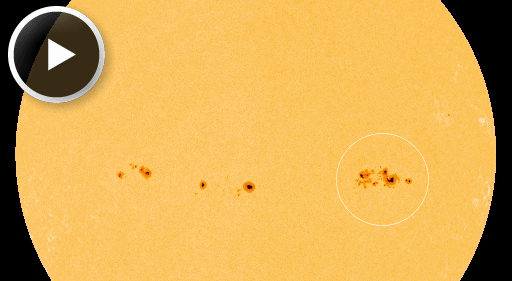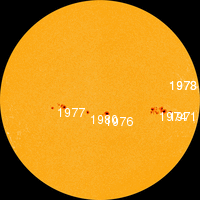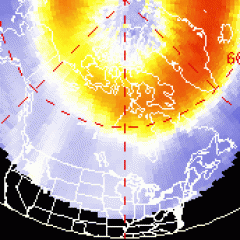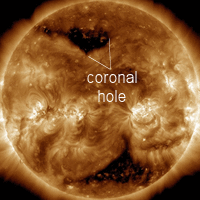
Storm WARNING: As expected a "cannibal CME" hit Earth's magnetic field on Feb. 15th at 1300 UT. However, the impact did not spark a geomagnetic storm. Storming could still happen, though, as another CME is en route, due to arrive on Feb. 15-16. High-latitude sky watchers should remain alert for auroras. Aurora alerts: text, voice
SUNSPOT OF INTEREST: For the 4th day in a row, big sunspot AR1974 is crackling with M-class solar flares. So far, however, the active region has failed to produce a major eruption. Will this change? Click to view a 4-day movie of the sunspot's development--then scroll down for the probabilities:
As the movie shows, AR1974 is in a state of rapid evolution. Its magnetic field is unstable and harbors energy for strong eruptions. Accordingly, NOAA forecasters have boosted the daily odds of M-flares to 75% and and X-flares to 15%. Solar flare alerts: text, voice

Solar wind
speed: 426.1 km/sec
density: 16.3 protons/cm3
explanation | more data
Updated: Today at 1717 UT
X-ray Solar Flares
6-hr max: C1 1413 UT Feb15
24-hr: C2 0319 UT Feb15
explanation | more data
Updated: Today at: 1700 UT
![]()
Daily Sun: 15 Feb 14
Sunspot AR1974 has a 'beta-gamma-delta' magnetic field that harbors energy for X-class solar flares. Credit: SDO/HMI
![]()
Sunspot number: 196
What is the sunspot number?
Updated 15 Feb 2014
Spotless Days
Current Stretch: 0 days
2014 total: 0 days (0%)
2013 total: 0 days (0%)
2012 total: 0 days (0%)
2011 total: 2 days (<1%)
2010 total: 51 days (14%)
2009 total: 260 days (71%)
Update 15 Feb 2014
The Radio Sun
10.7 cm flux: 167 sfu
explanation | more data
Updated 15 Feb 2014
![]()
Current Auroral Oval:
Switch to: Europe, USA, New Zealand, Antarctica
Credit: NOAA/POES
![]()
Planetary K-index
Now: Kp= 3 quiet
24-hr max: Kp= 3 quiet
explanation | more data
Interplanetary Mag. Field
Btotal: 12.5 nT
Bz: 9.8 nT north
explanation | more data
Updated: Today at 1717 UT
![]()
Coronal Holes: 14 Feb 14
Solar wind flowing from the indicated coronal hole could reach Earth on Feb. 17-18. Credit: SDO/AIA.





